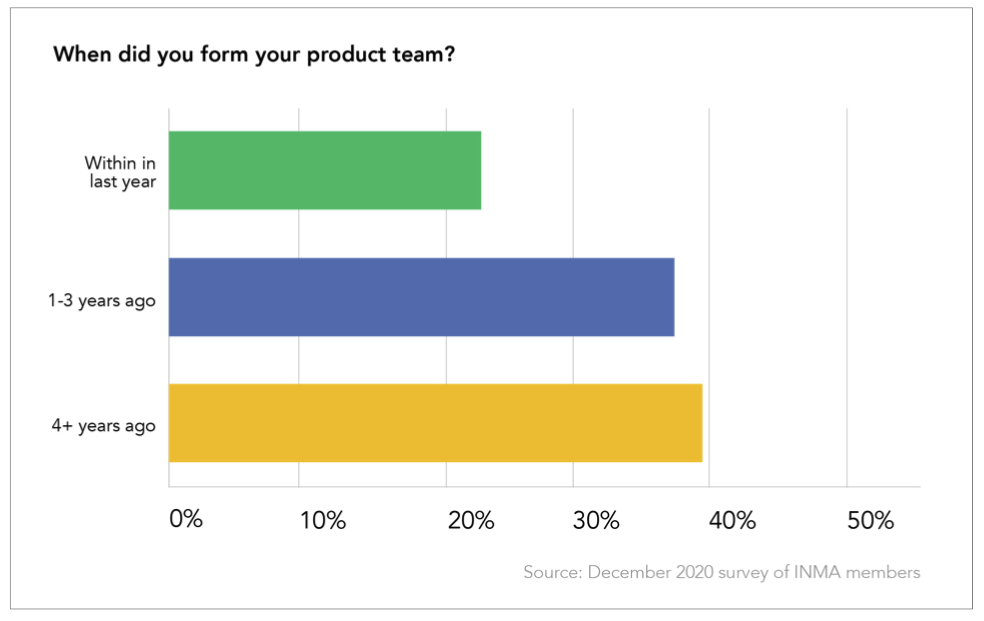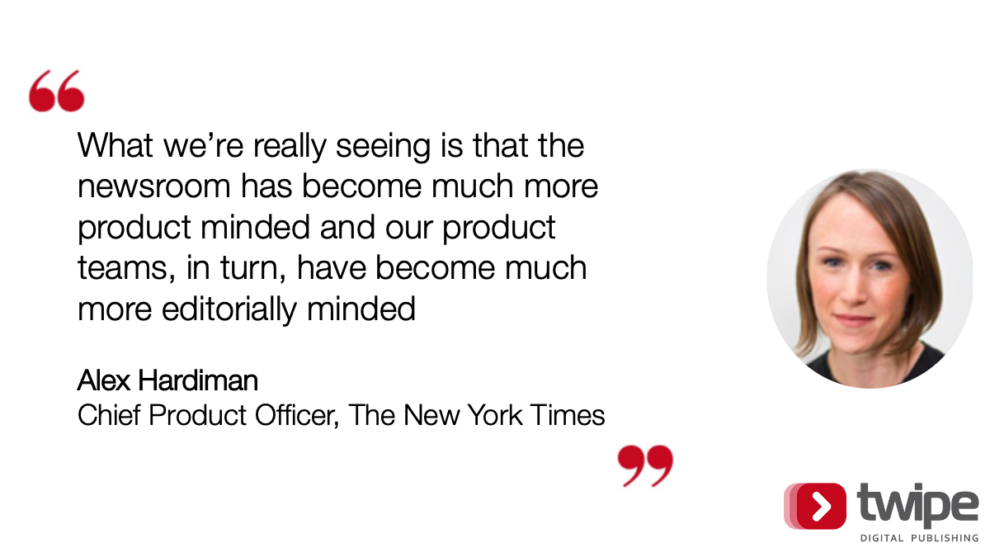93% of people think that product is important, yet over 50% don’t fully know what product is! In this article, we unbundle this by examining Jodie Hopperton’s latest INMA report “How Product Is Leading Media’s New Growth Path“.
The role of product is a topic we have often discussed at Twipe. In a world of declining advertising revenue and a fight to leverage subscriber revenue, having a good product helps publishers to stand out from the competition.
Recently at Twipe, we have seen a growing number of publishers choosing product centric strategy for their subscriber growth. This has been the case with UK publisher the Daily Telegraph who‘s new unified app built on the Twipe platform will play a fundamental role in reaching 1 million paying subscribers by 2023.
What is product?
Product is a relatively new concept for publishers. Brought about by the age of digitalisation, publishers were challenged with going beyond their traditional print offering. As a form of R&D, product has grown quickly within the news media industry. In fact, for many publishers, product is both the youngest and fastest growing department. In their research, INMA found this to be overwhelmingly true. Close to 40% of their survey audience had formed their product teams within the last 4 years, with 23% having formed over the last year.

Ultimately, the goal of these product teams is to provide customers with the best possible news experience. Product teams bring customer experience directly to the heart of a publisher.
“Product is a cross-organisation function, working closely with content and technology, which balances the consumer experience with business objectives”.
Jodie Hopperton
Hopperton breaks product down into 4 specific elements:
- Consumer facing/platform: Apps, ePaper, Newsletter, Podcasts
- Enabling product: Checkout, paywall experiences, personalisation, OVP and notifications
- Internal tools: Advertising tools, CRM, CMS.
- B2B Tools: Internal tools that can be sold separately to other publishers. These include Twipe’s JAMES Personalisation solution.
Some publishers have already unleashed their product potential. The New York Times have seen digital subscriptions surpass print circulation revenue thanks to their product innovation. Hopperton found that their success was largely down to the fact that the NYT’s product base grew out of its’ mobile strategy. All of these product areas are vital for the future survival of publishers in the digital age.

Where does product live?
Many publishers placed product teams within technology departments. This was due to its’ traditional nature of being focused on digital. As the importance of product has increased, its’ internal reach has become widespread. In her report, Hopperton boiled down the exhaustive list of the internal reach of product to mainly working across: editorial, technology, design and user experience, data, marketing, and revenue.
This list remains extensive but is down to the increasing importance of product. Whilst INMA found that the most common place for product to sit was in a product team reporting directly to the CEO or publisher, they also noticed its’ widespread appeal within publishers. 25% of product teams sat under technology, 8% under a digital unit, 9% with editorial and then 12% within marketing and 12% spread across different departments.
Product is the cement in between the bricks
Noemi Ramirez, Chief Product and Customer Officer at Prisa
So while there may be no one-size-fits-all answer to where product belongs, it’s clear that it plays an important role across the board for publishers. For those liking uniformity, there is hope. INMA found that most product teams will have product owners and feature specific scrum teams for products. Despite all this, product’s structure will conclusively relate to business needs and company structure.
How can publishers promote a product culture?
Ensuring the right culture and mindset is in place is vital for product to thrive. Whilst many encourage product teams to think with a journalistic mindset, newsrooms are now encouraged to think with a product mindset. By encouraging a product mindset, a habitual approach to connecting all work to product goals and needs is created. Problems can be spotted more clearly once this mindset is adopted. It is then easier to link these problems to bigger goals.
This shift is essential for customer satisfaction. It is not an essential shift due to a change in how news should be reported, but through the expectations consumers have of product after their experiences with market leaders such as Netflix and Spotify. This is not to say that journalists should deter from reporting and uncovering high-quality news. Product is a data-driven role. It is a world away from the intuition shown by journalists. Journalists must be encouraged to combine intuition with a product mindset instead of abandoning this intuition.
We now have reporters who understand that the audience reach and distribution that they get from a single push notification on their smartphone far outweighs what they get through … placement on the front page of the newspaper.
Alex Hardiman, Chief Product Officer, The New York Times
Instilling this product culture change from day one for employees onboarding is vital to make this product culture shift stick. Ensuring product has a voice in the C-suite is also fundamental since introducing a product mindset is a large-scale organisational change. Real change can be driven from the top and if the right noises are coming from the C-suite, culture shifts take better shape.
For Louise Story, Chief News Strategist, Chief Product and Technology Officer of The Wall Street Journal, this new product-led culture is a key competency for hiring. Ensuring that future employees are willing to be part of this new customer-orientated product culture ensures that the right messages can be pushed internally. This is particularly important with new voices being able to encourage change amongst sometimes reluctant pre-standing employees. Don’t miss your chance to hear from Louise at our Digital Growth Summit this September!

